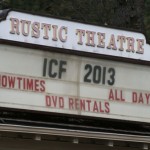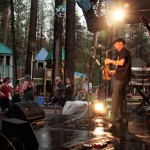The directors of the Idyllwild Water District unanimously adopted a 2015-16 budget at their June 17 meeting. The proposed budget and the one adopted last June for the current fiscal year, which ends June 30, are nearly the same.
All revenues — water sales, sewer fees and property taxes — are estimated to increase about $115,000 and total expenses will grow 2 percent. Exclusive of depreciation allocations, the district’s net income will be about $220,000. The sewer district’s net is about two-thirds of this total.
At the Finance Committee meeting on Tuesday, the day before the board meeting, General Manager Tom Lynch described the proposed budget to the committee. “We are not anticipating any increase in [water] rates. The goal is to stabilize the budget by increasing efficiencies,” he stated. “We’re trying to balance the capital and operating costs.”
During the board’s deliberation of the budget, Director John Cook said, with pride, “I’m pleased with just a 1-percent increase in costs and we’re continuing to look for more savings … already working with Southern California Edison to use the solar [plant near Foster Lake] to its maximum.”
The district’s budget projects water sales revenues to be about $978,000, a $40,000 increase over the adopted 2014-15 budget. The budget does not propose any rate increase. The additional revenue is the result of a full year’s application of the October rate increase.
However, through May, water sales have totaled $1.1 million and will approach and possibly exceed $1.2 million this year, well above the original $938,000 estimate.
While district officials and the board have extolled the conservation efforts of customers to reduce water usage during the drought, they have equally lamented the simultaneous danger of dwindling revenues. Yet, the actual revenues for fiscal 2014-15 will exceed the budget projection by nearly $275,000 and have increased every year since 2009-10.
“This is partly because we are conservative in our projections, and our uncertainty regarding which water conservation period we would be in. (I thought we might have hit Stage 3 a little earlier, but due to more precipitation than the previous year and our operational improvements, we are able to stay in Stage 2 longer than anticipated),” Lynch wrote in a email explaining the reason for a projection significantly below actual revenues.
“In FY 2015-16, again we are being conservative. If the drought continues we will be in Stage 3 at some point. We anticipate the state will impose tighter regulations, we likely will have no new construction, and there will be various other limiting factors that push us to anticipate continued conservative estimates on revenues. In terms of budgeting practices, it is always better to be conservative than liberal in projections. If we projected $100,000 or $150,000 more and didn't hit the projection, we would come up short on covering our costs and would have to go back to the board later in the year to ask to tap into reserves. We are asking our customers to conserve, and I don't want to send a mixed message.”
The board also approved capital improvement projects for both programs. The water projects total about $440,000. But the initiation of several of the projects, such as security fencing and cameras, will depend upon grant funding. IWD has requested grant funding for several other projects, such as rehabilitation of the vertical wells above Foster Lake.
Proceeding with these projects, Lynch said, “If we do not receive any of the grant funds, we may have to proceed with portions of these depending on needs, i.e. well rehabilitation.”
The sewer program reflects the initiation of its recycled water project. The estimated cost of $2 million has already received state approval. The district will receive both a loan and a grant for this project.
Separately, the district plans to spend $91,000 on other sewer capital projects, such as painting and laying asphalt at its sewer facility.










